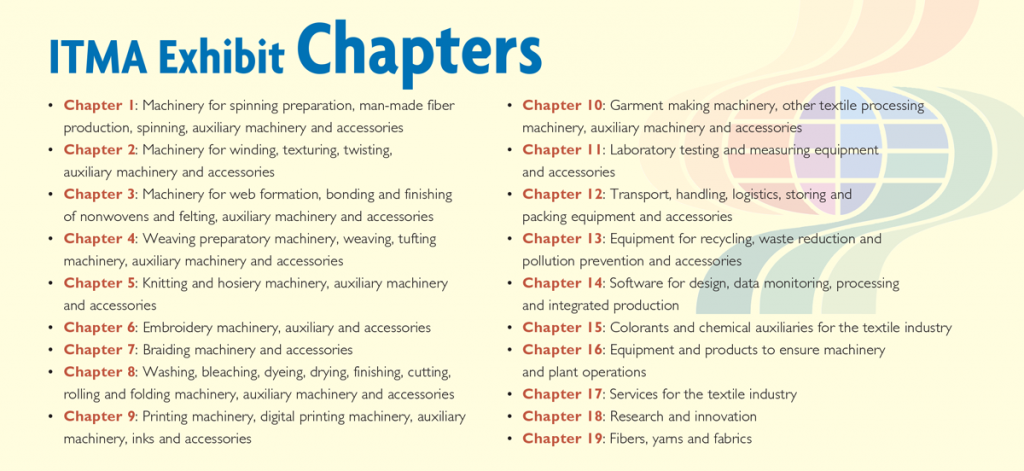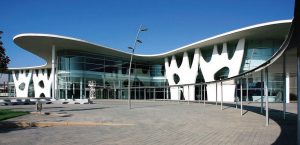
ITMA 2019 returns to the heart of the Spanish textile industry for its 18th edition this June.
TW Special Report
ITMA 2019, the quadrennial textile industry event generally regarded as the largest textile machinery show, is rapidly approaching. “Innovating the World of Textiles” is the theme for the 18th edition of ITMA. The event will be held June 20-26, 2019, at the Fira de Barcelona Gran Via, Barcelona, Spain, and will showcase fibers, yarns and fabrics as well as the latest technologies for the entire textile and garment manufacturing value chain.
Owned by The European Committee of Textile Machinery Manufacturers (CEMATEX), the 2019 show is organized by Brussels-based ITMA Services.
Fira de Barcelona Gran Via is located in a new business development area close to the Barcelona airport and connected to the public transportation network. The venue was designed by the Japanese architect Toyo Ito and is known for its functionality and sustainable features including a large rooftop photovoltaic installation.
“Innovation is vital for the industry’s success as Industry 4.0 gains momentum in the manufacturing world,” said Fritz Mayer, CEMATEX president. “The shift towards open innovation has resulted in increased exchange of knowledge and new types of cooperation among education institutions, research organizations and business. ITMA has been a catalyst and showcase of ground-breaking innovation since 1951. We hope participants will be able to share new developments, discuss industry trends and spur creative efforts, thus ensuring a vibrant innovation culture in a global context.”
Exhibitor Space Fully Booked
The exhibit space was completely sold out by the application deadline, and the show will occupy all nine halls of the Fira de Barcelona Gran Via venue. More than 1,600 exhibitors are expected to fill the gross exhibition area of 220,000 square meters. Organizers also predict some 120,000 visitors from 147 countries.
“The response for ITMA 2019 is so overwhelming that we have not been able to meet the demand for space despite adding two more exhibition halls,” Mayer said. “We are grateful for the vote of confidence from the industry. It shows that ITMA is the launch pad of choice for the latest technologies from around the world.”
Exhibitor categories showing the largest growth include the garment making, and printing and inks sectors. Garment making counts a number of first-time exhibitors eager to demonstrate their robotic, vision system and artificial intelligence solutions; and the number of exhibitors showcasing their technologies in the printing and inks sector has grown 30 percent since ITMA 2015.
“Digitalization is having a tremendous impact in the textile and garment industry, and the true extent of its influence can be seen not only in textile printing companies, but throughout the value chain,” said Dick Joustra, CEO, SPGPrints Group. “Brand owners and designers are able to use opportunities, like ITMA 2019, to see how the versatility of digital printing can transform their operations. As a total supplier in conventional and digital textile printing, we see ITMA as an important marketplace to show our latest technologies.”
All exhibits at ITMA 2019 will be indexed into 19 categtories called chapters (see Table 1).
What’s New?
The Innovation Lab recently was launched for the 2019 edition of ITMA to emphasize the innovation theme. The Innovation Lab concept features:
- A Research and Innovation (R&I) Pavilion showcasing the research and development work of 27 participating organizations to encourage collaboration between industry and academia;
- ITMA Speakers Platform where participating R&I institutes can present research projects and developments;
- Innovation Video Showcase featuring selected videos about the exhibits to be shown at the Speakers Platform;
- ITMA Sustainable Innovation Award, which was created in 2015 to “recognize the collaborative efforts by the global textile industry to advance business sustainability through innovative solutions, and promote outstanding industry related research” in two categories — Industry Excellence and Research & Innovation Excellence.
“By launching the ITMA Innovation Lab feature, we hope to better drive industry focus on the important message of technological innovation and cultivate an inventive spirit,” said Charles Beauduin, chairman of ITMA Services. “We hope to encourage greater participation by introducing new components, such as the video showcase to highlight our exhibitors’ innovation.”
The official ITMA 2019 app also is new for 2019. The app, which may be downloaded free of charge from the Apple App Store or Google Play, offers key information on the exhibition to help attendees plan their visit. Maps and searchable exhibitor lists, as well as general show information are all available in the app.
“As ITMA is a huge exhibition, the app will be a useful tool to help exhibitors and visitors maximize their time and resources on site,” said Sylvia Phua, managing director of ITMA Services “An appointment scheduler will allow visitors to request meetings with exhibitors before they arrive at the show. The scheduler and online floorplan will be available from late April 2019.”
Conferences, Education
Outside of the bustling exhibit floor, attendees also have the opportunity to participate in a variety of educational and networking events. Associated and collocated events include the ITMA-EDANA Nonwovens Forum, Planet Textiles, Textile Colourant & Chemical Leaders Forum, Digitl Textile Conference, Better Cotton Initiative Seminar and the SAC & ZDHC Manfacturer Forum. See TW’s March/April 2019 issue for more information about the educational opportunities.
Visitor Incentive
Organizers are offering an early-bird registration discount. Anyone who registers online before May 15, 2019, may purchase a one-day pass for 40 euros or a seven-day badge for 80 euros — which is up to 50-percent lower than the onsite rates. Attendees may also purchase conference and forum passes online, as well as request an invitation letter for a visa while ordering a badge.
“We expect interest from visitors to be very strong,” Mayer said. “Hence, visitors are advised to book their accommodation and buy their badge early.”
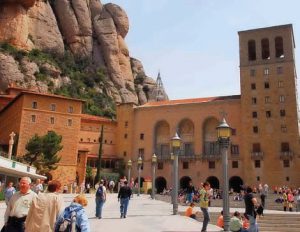
About Barcelona
Located on Spain’s northeast Mediterranean coast, Barcelona is capital of the autonomous community of Catalonia, and — with a population of more than 1.7 million people in the city proper and a metropolitan area population of more than 5 million — Spain’s second-most populous city after Madrid and Europe’s largest Mediterranean coastal metropolitan area.
Textile production was an important component of industrialization in the late 18th century, and it continues to be important today — indeed, the vast majority of members of the Spanish Association of Manufacturers of Textile and Garment Machinery (AMEC AMTEX) are located in Barcelona province, and AMEC AMTEX has its headquarters in the city of Barcelona a couple of miles up the road from Fira de Barcelona. In addition, the city has attempted more recently to become a major fashion center.
The Catalan region has long fostered a strong separatist identity and today still values its regional language and culture. Although Spanish is spoken by virtually everyone in Barcelona, Catalan is understood by about 95 percent of the population and spoken by about 75 percent.
Barcelona’s Roman origins are evident in several locations within the Barri Gòtic, the historical center of the city. The Museu d’Història de la Ciutat de Barcelona provides access to excavated remains of Barcino underneath the center of present-day Barcelona, and parts of the old Roman wall are visible in newer structures including the Gothic-era Catedral de la Seu.
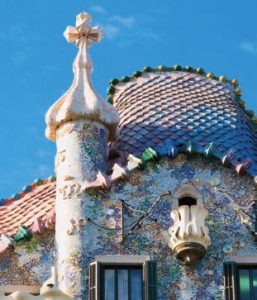
The strange, fanciful buildings and structures designed by turn-of-the-century architect Antoni Gaudí, found in numerous locations around Barcelona, are major attractions for visitors to the city. Several of them together comprise a UNESCO World Heritage Site under the designation “Works of Antoni Gaudí” — including the Façade of the Nativity and the Crypt at the Basílica de la Sagrada Família, Parque Güell, Palacio Güell, Casa Milà, Casa Batlló and Casa Vicens. The site also includes the Crypt at the Colònia Güell, an industrial estate established in nearby Santa Coloma de Cervelló by Eusebi Güell, a textile business owner who moved his manufacturing business there from the Barcelona area in 1890, setting up a state-of-the-art vertical textile operation and providing living quarters and cultural and religious amenities for the workers. The mill closed in 1973.
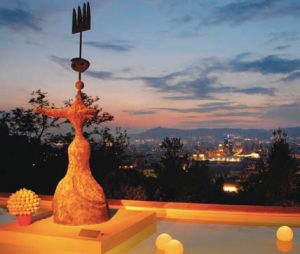
Barcelona was also home at one time or another to 20th-century artists Joan Miró, a lifelong resident, as well as Pablo Picasso and Salvador Dalí. There are museums devoted to the works of Miró and Picasso, and the Reial Cercle Artístic de Barcelona houses a private collection of works by Dalí.
The Museu Nacional d’Art de Catalunya, located in the Parc de Montjuïc near Fira de Barcelona, has a major collection of Romanesque art and other collections of Catalan art spanning the ages.
Barcelona also has a textile museum, the Museu Tèxtil i d’Indumentària, which offers a collection of garments dating from the 16th century to the present; Coptic, Hispano-Arab, Gothic and Renaissance fabrics; and collections of embroidery, lacework and printed fabrics.
Those wanting to get a taste of life in Barcelona may want to join the locals in the evening for a stroll through the streets of the city, and sample the local cuisine and nightlife. Just remember that dinner is served late — restaurants generally serve between 9 and 11 p.m. — and partying goes on very late into the night.
There are several options for getting around Barcelona. Public transportation services include a metro with nine lines, buses, both modern and historic tram lines, funiculars and aerial cable cars.
For more information about ITMA 2019, please visit itma.com.
February 20, 2019

